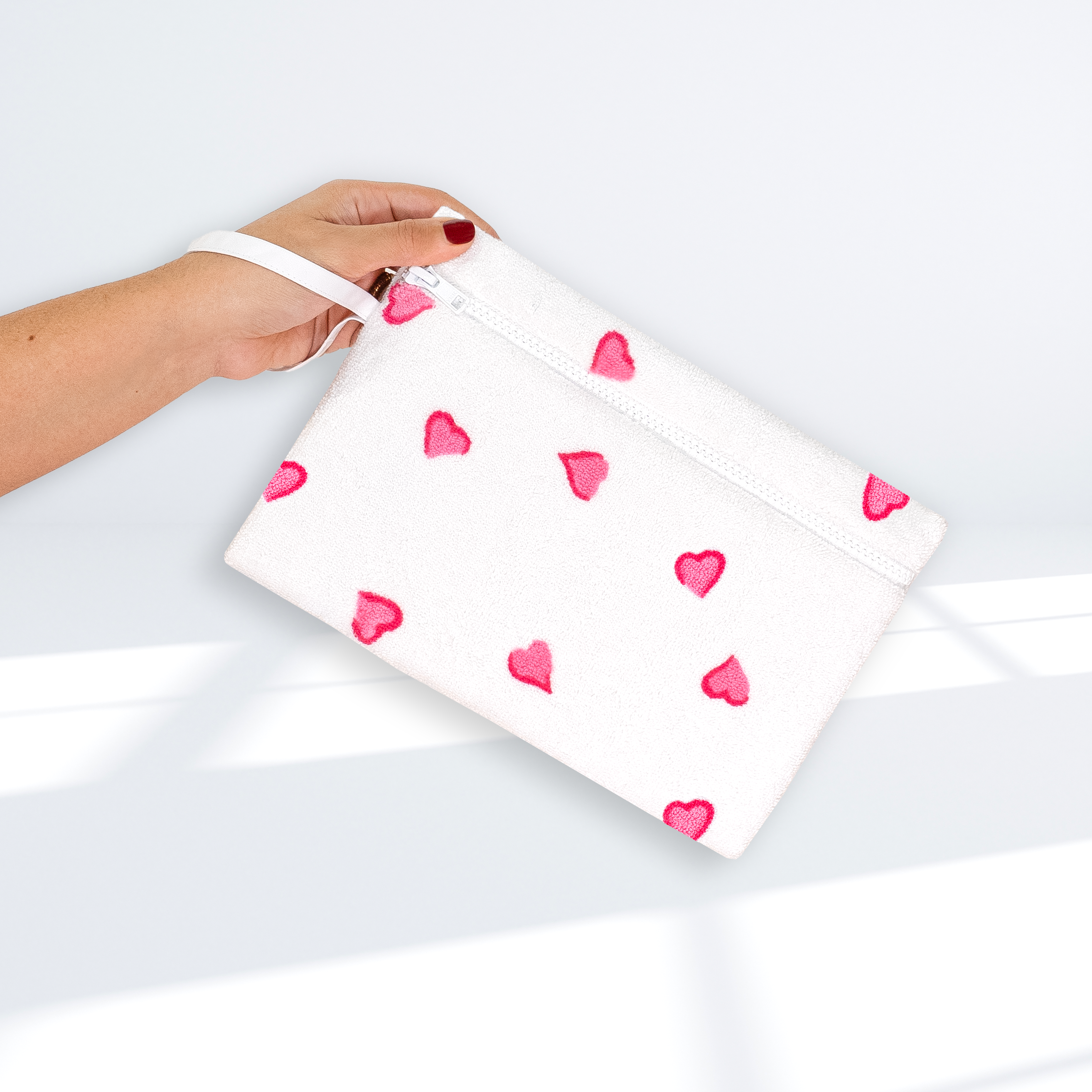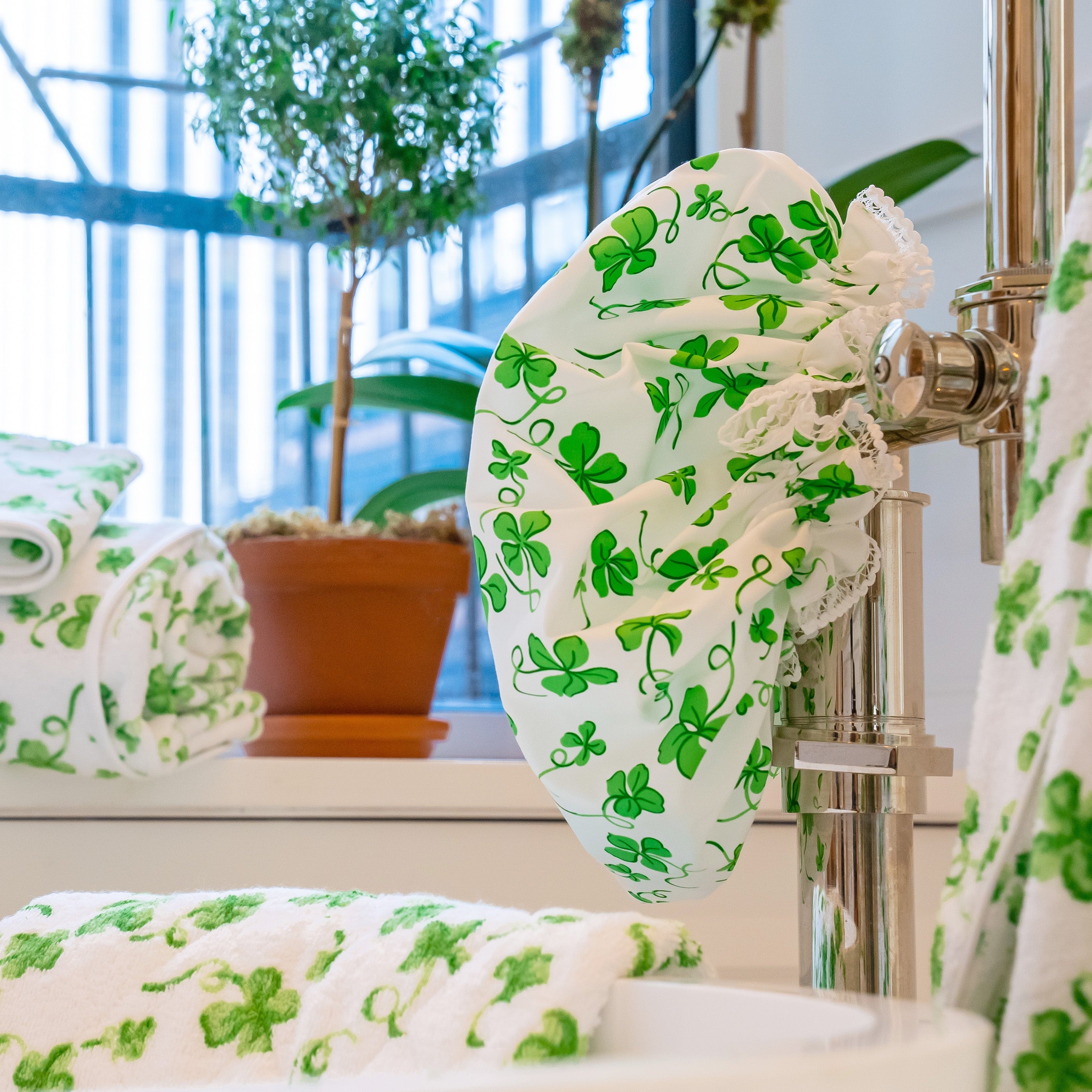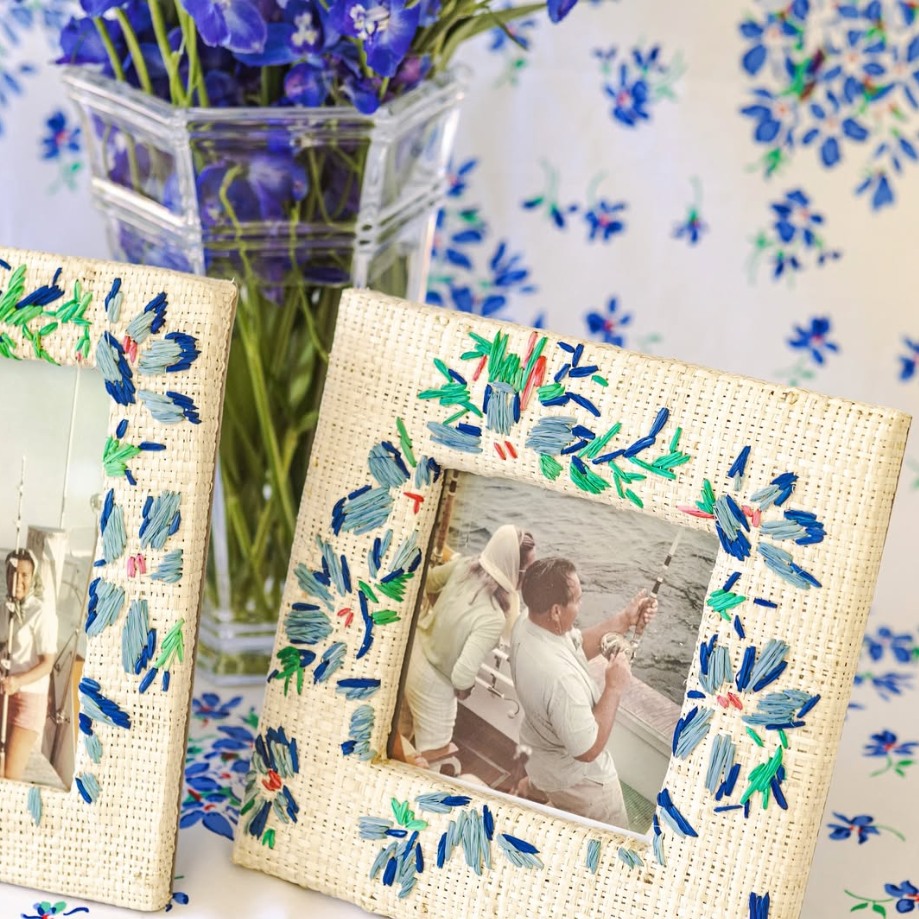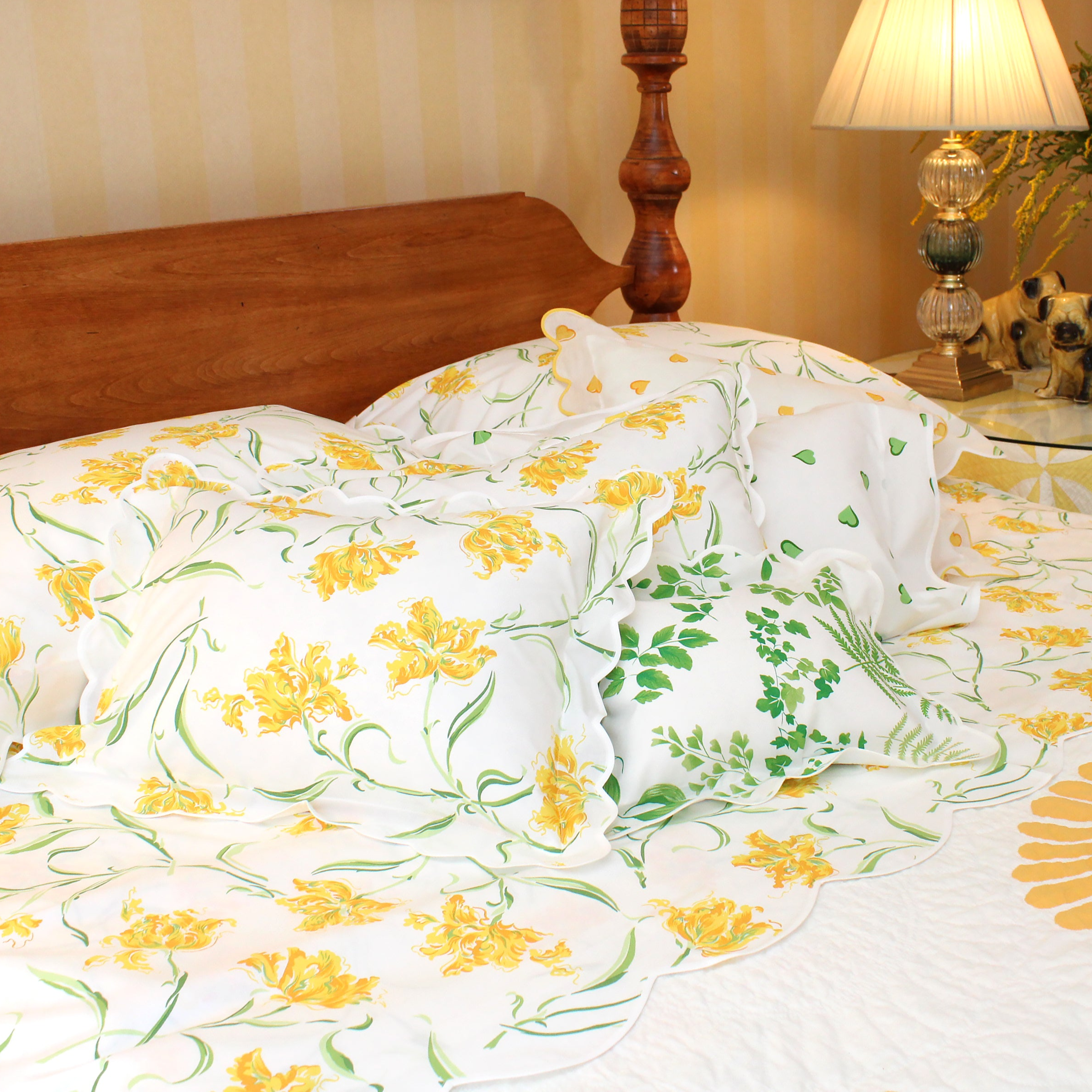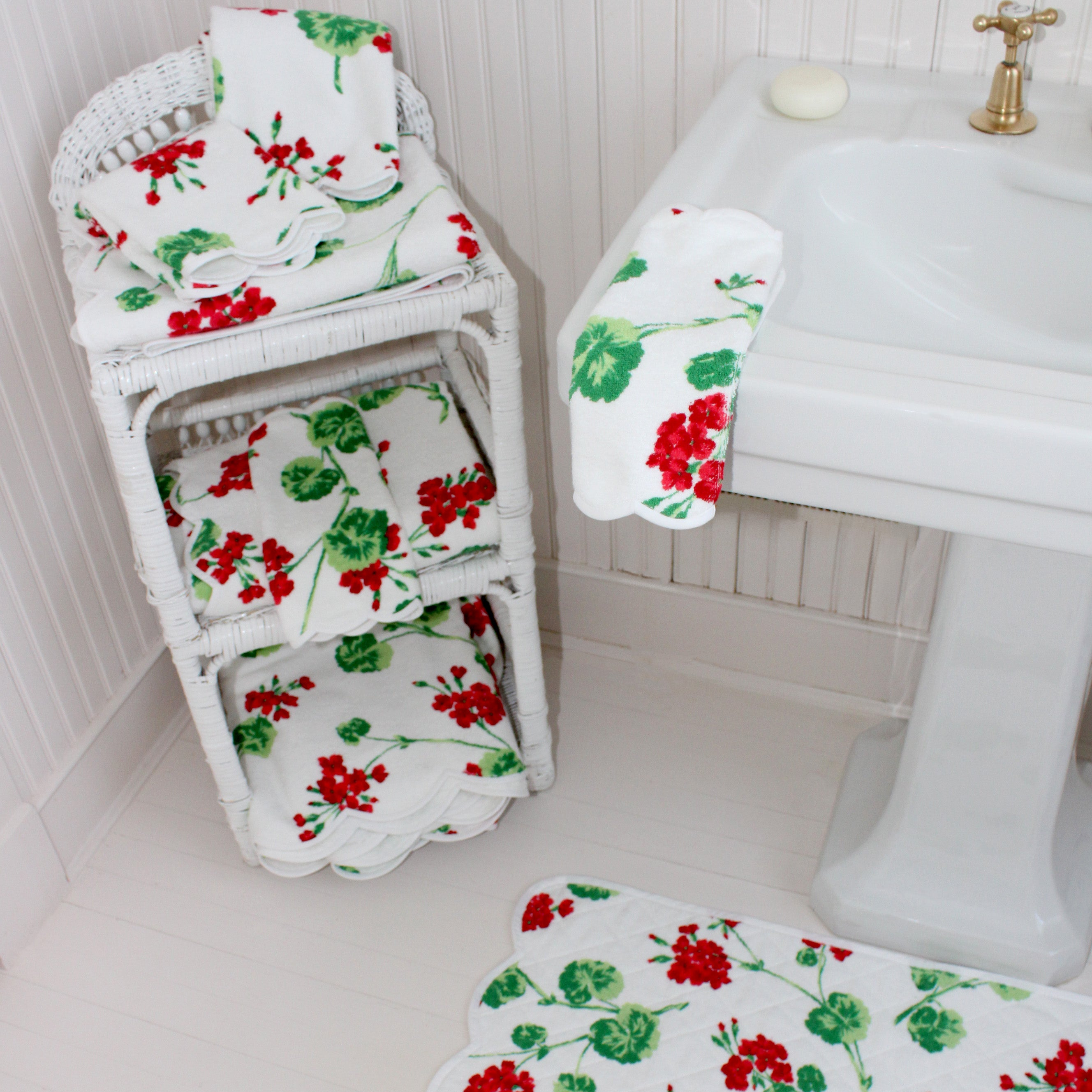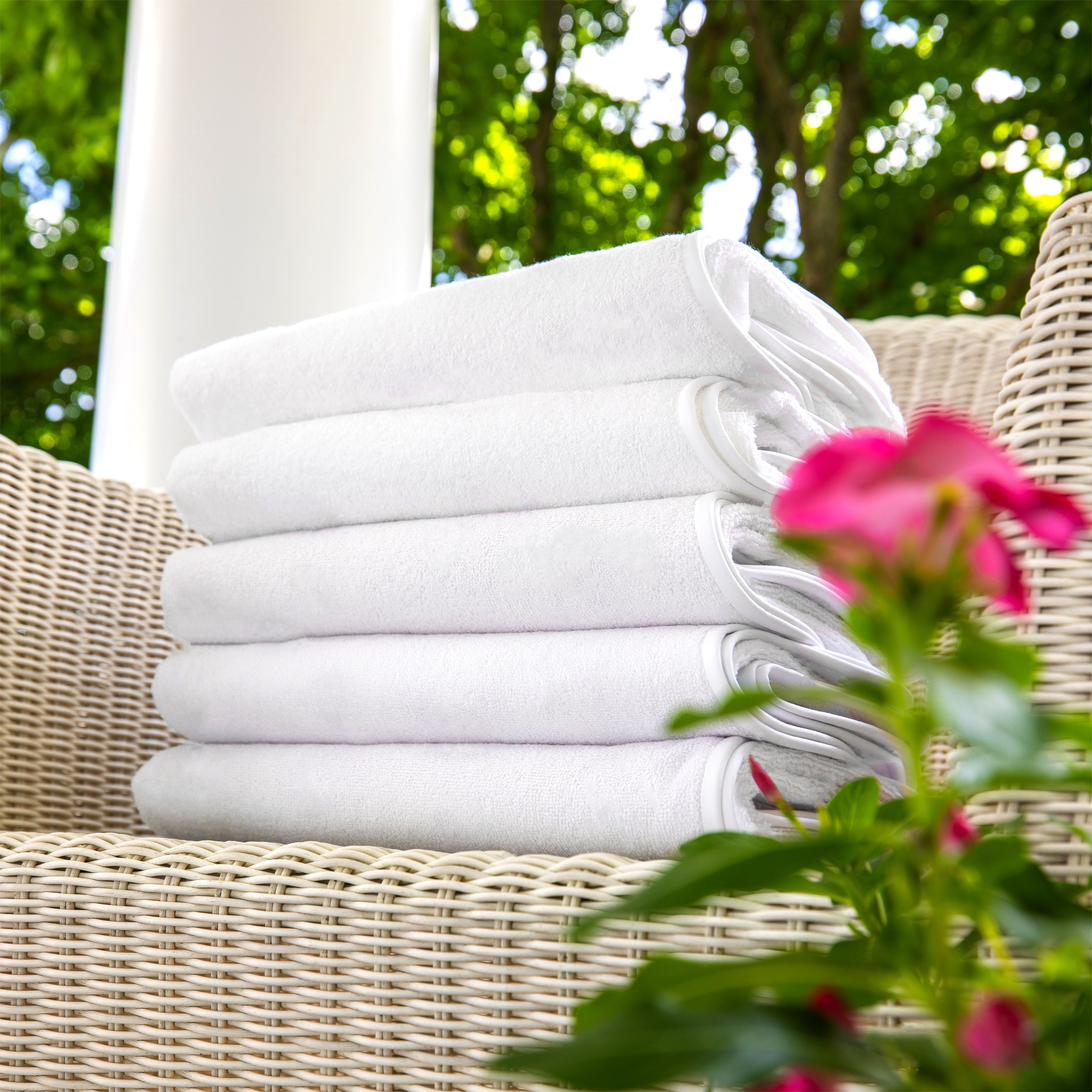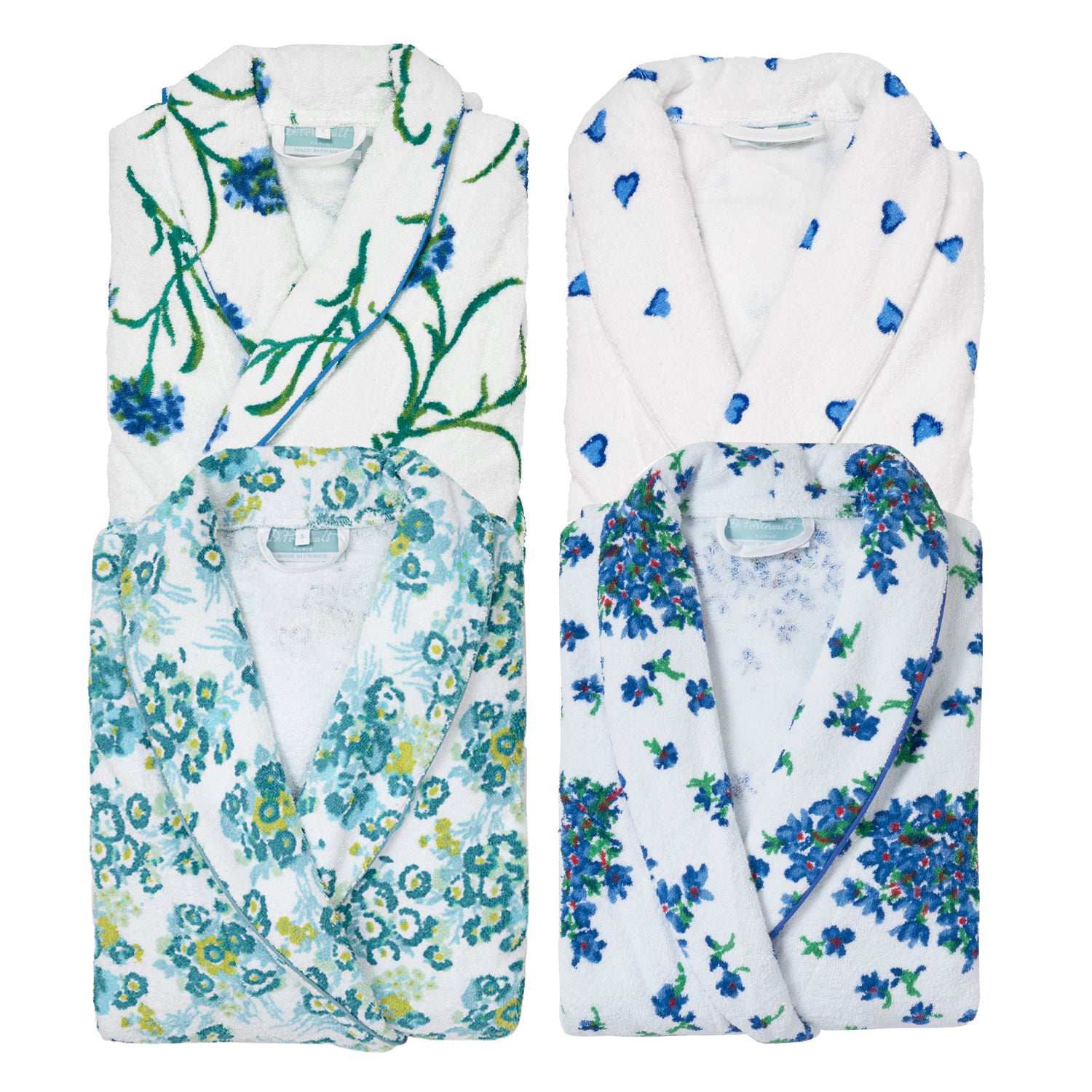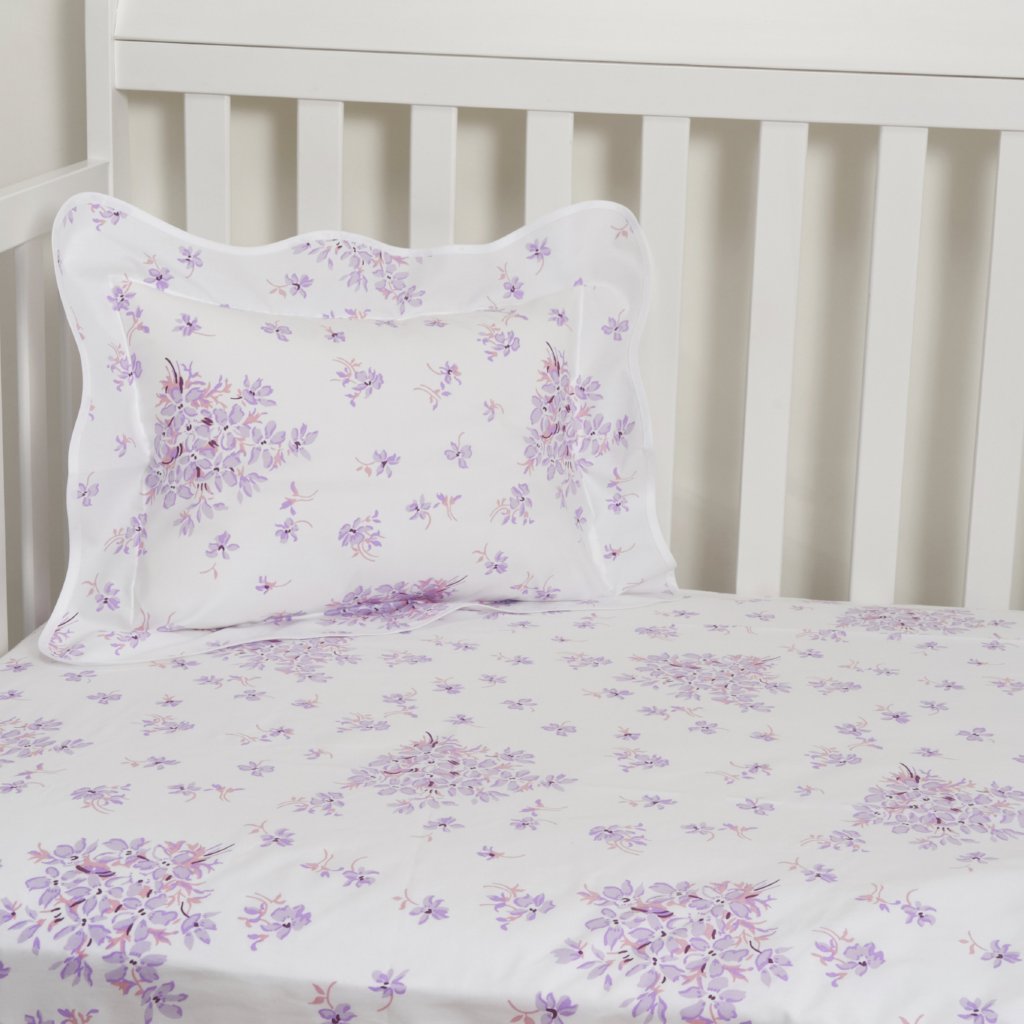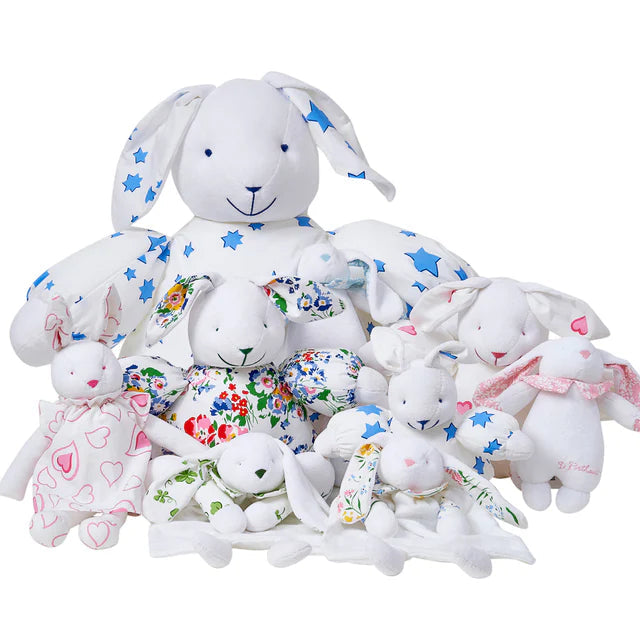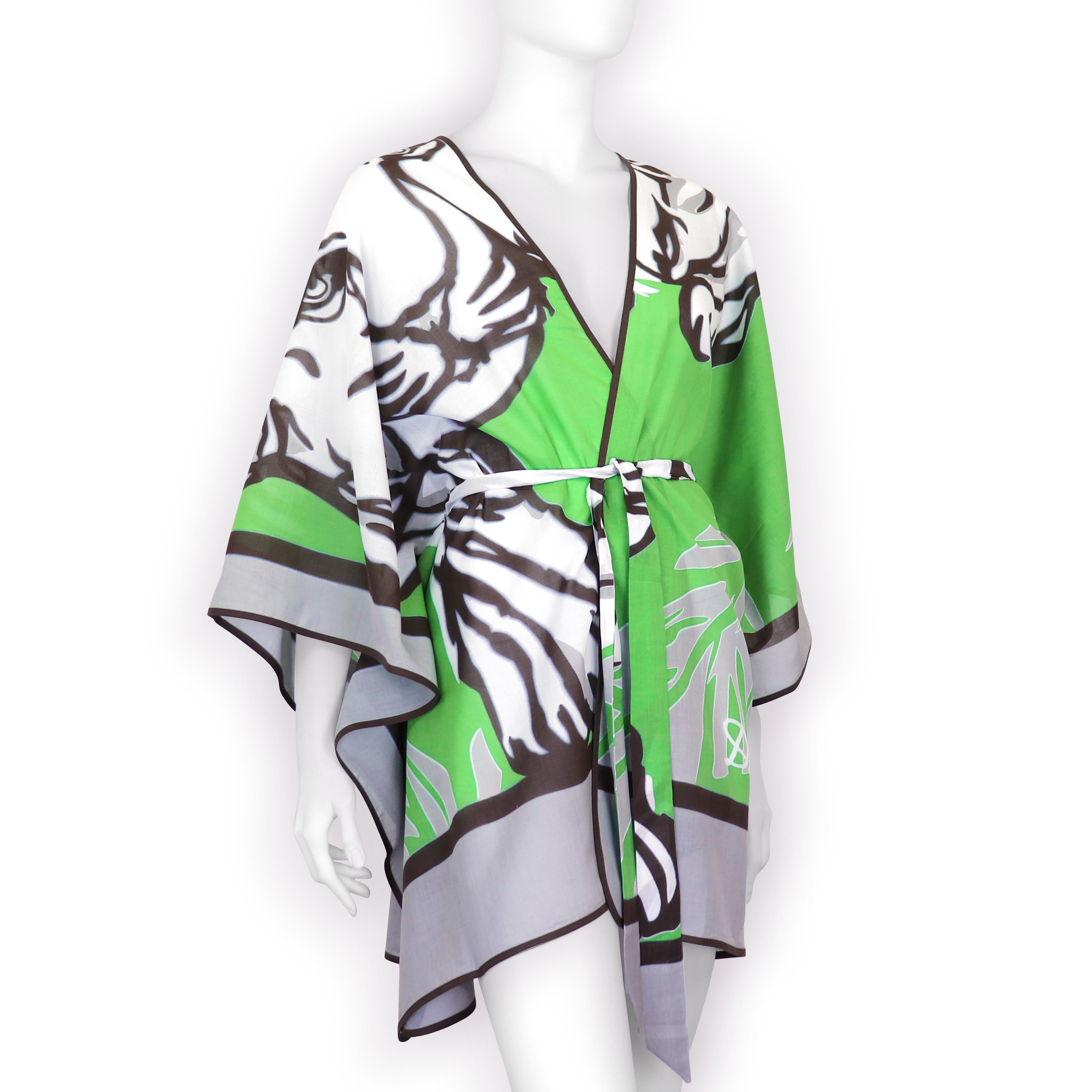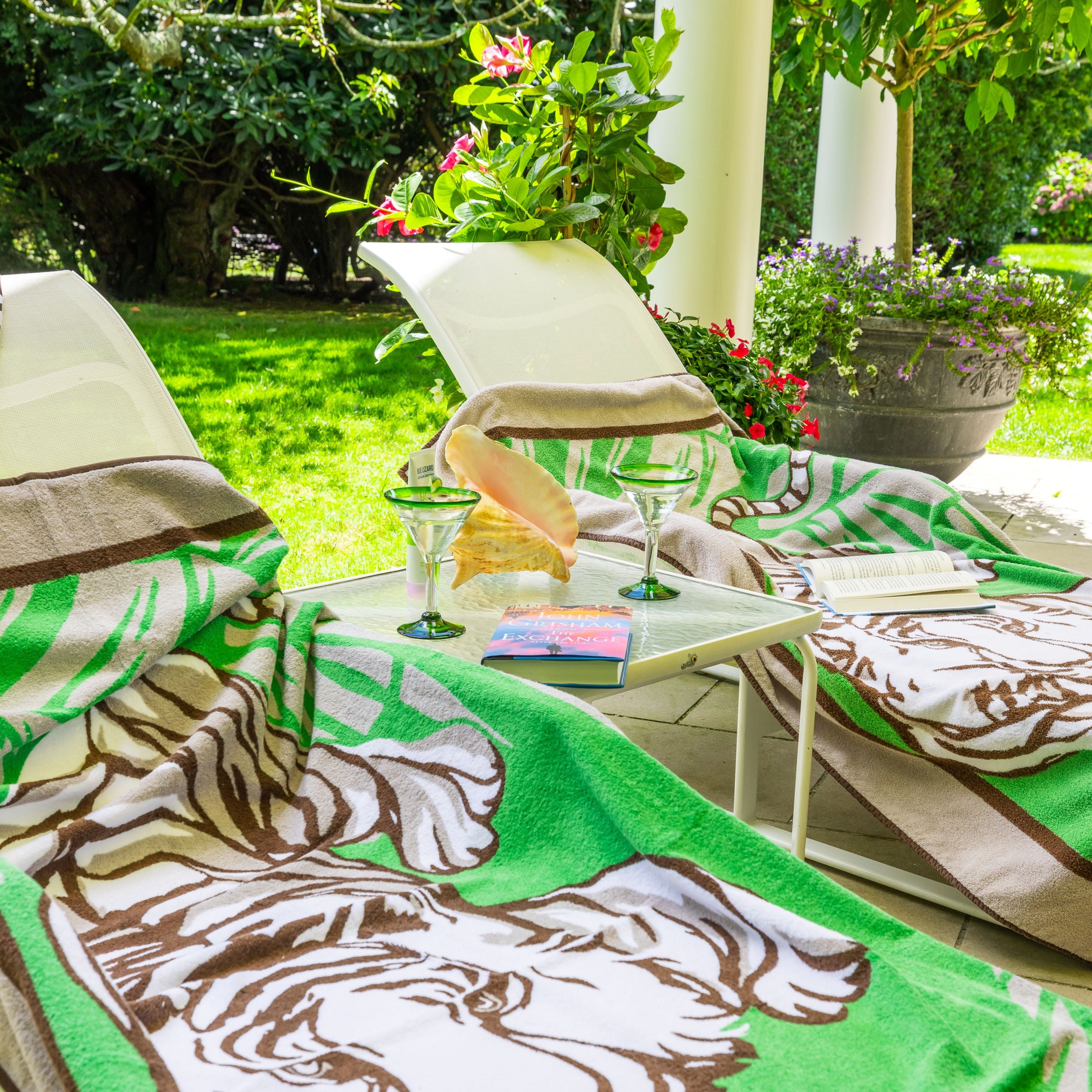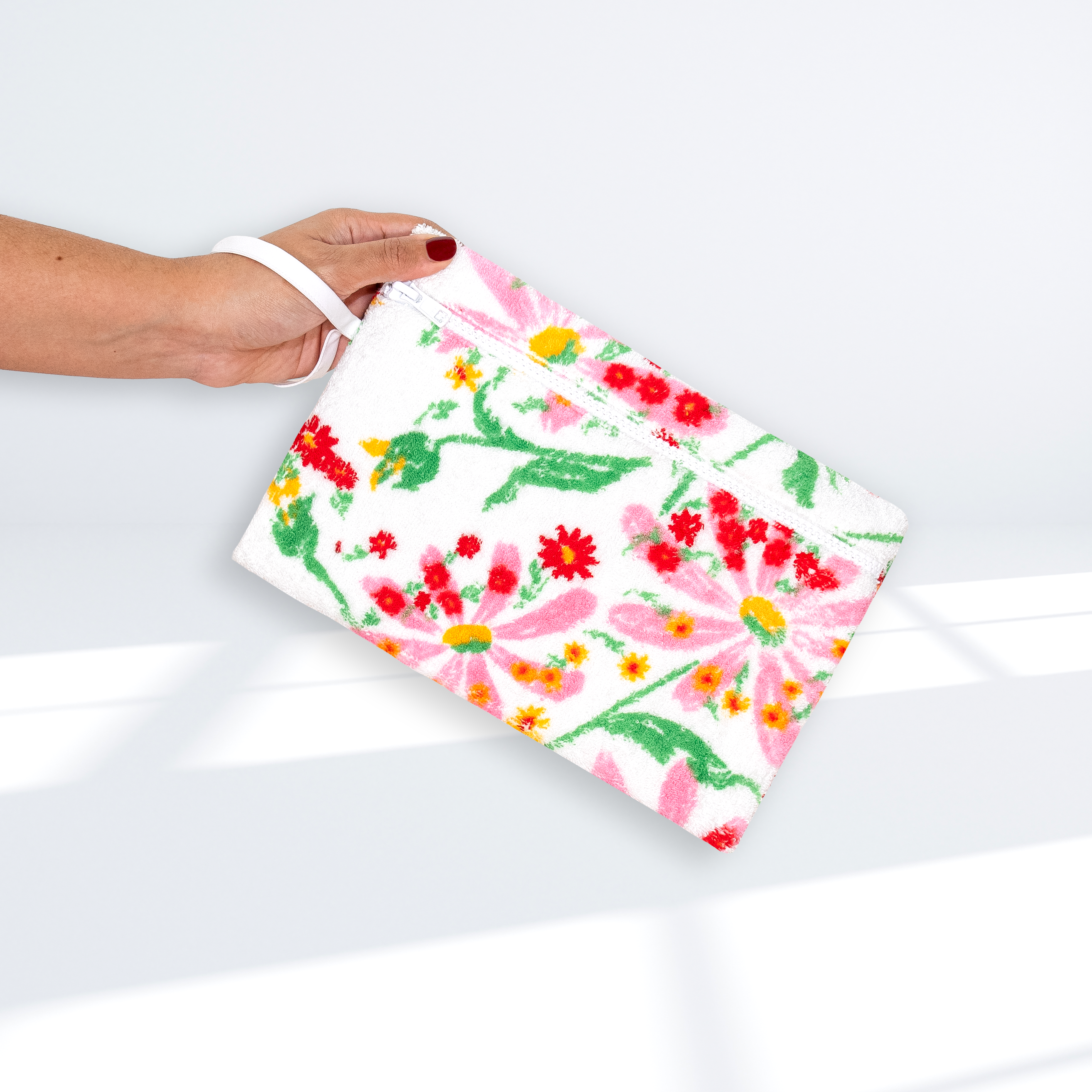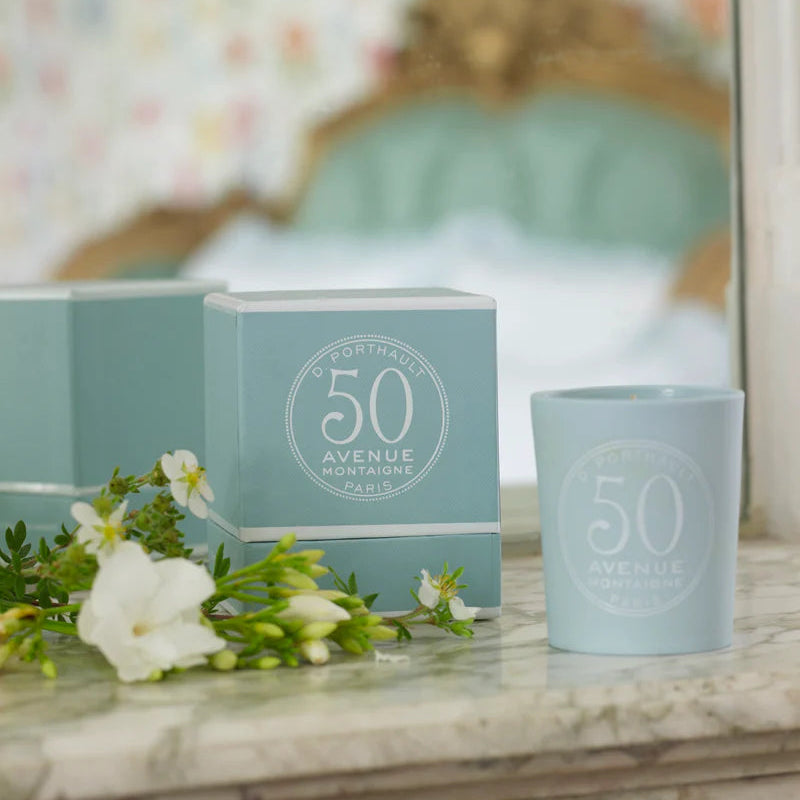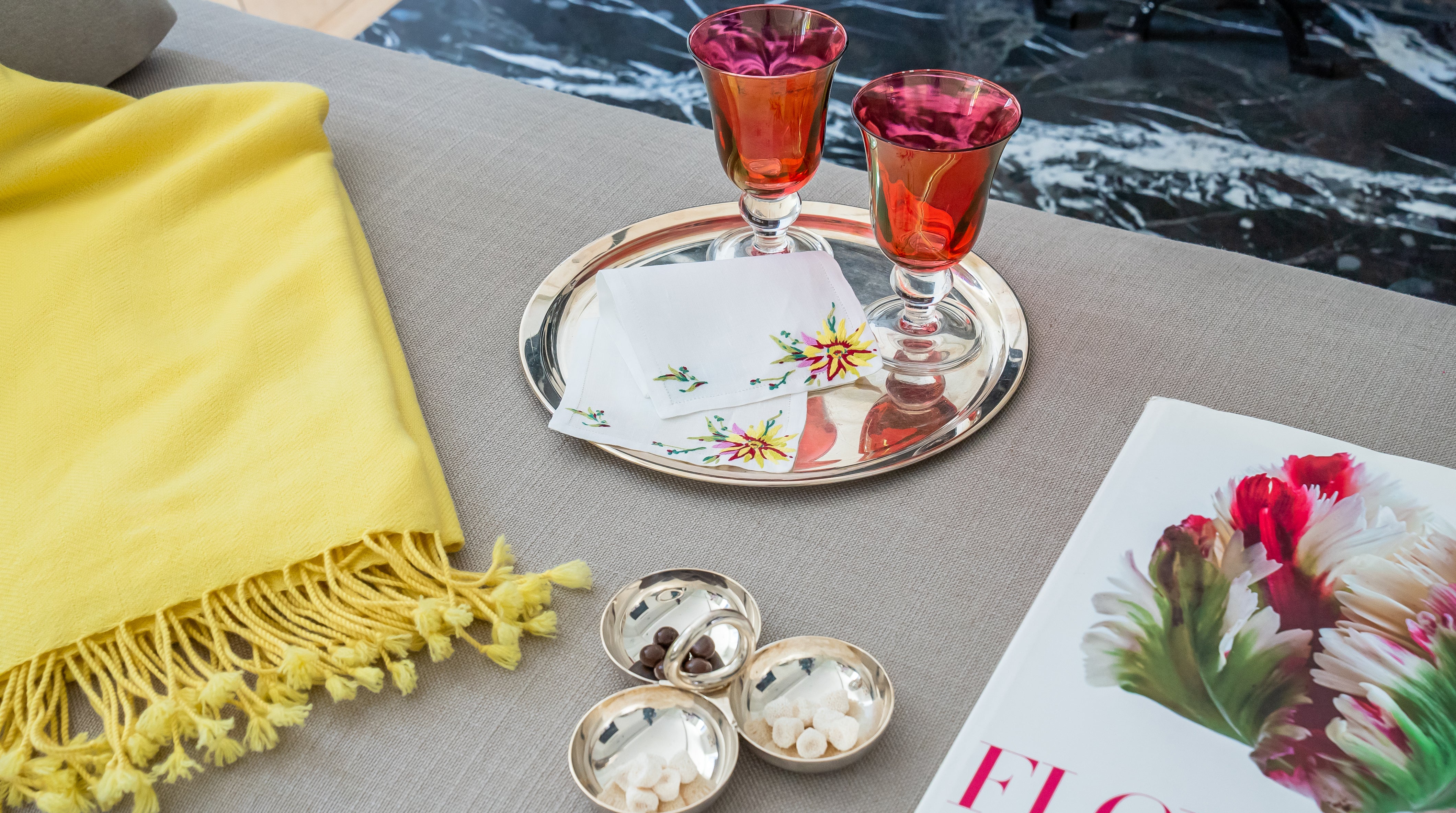CARING FOR YOUR LINENS
D. Porthault linens will last for years with gentle care. Proper cleaning and storage will prolong their life and ensure they retain their heirloom quality. Your linens exist to be enjoyed, and you should always feel comfortable with them. Like fine silver or pearls, the more you use your linens the more luminous and precious they will become.
SHEETS, PILLOW SHAMS & DUVET COVERS
All D. Porthault bedding is woven of 100% Egyptian cotton or Belgian linen on extra wide looms and cut generously. Some shrinkage of the natural fibers is normal, but that has been taken into consideration in production, and you will always have abundant fabric.
WASHING
A first wash is important for new linens and prepares them for a long and beautiful life. Unfold your linens before loading them into the washing machine, and begin the first wash with a pre-soak in cold water and a small amount of liquid detergent. After this soak cycle, run a wash cycle at low temperature, again using very little liquid detergent, followed by a cold water rinse. If your washer does not have a pre-wash/soak cycle, we suggest a hand-soaking for your first wash.
On succeeding washes, machine wash your linens in warm (not hot) water* and follow with a full, cool rinse. Always select a gentle wash and spin cycle. Separate bright colors from whites, and remember to include only natural sheeting fabrics in your wash. Synthetics, if co-mingled, can cause pilling in your natural fabrics.
As with the first wash, unfold or loosely shake open your linens before loading, and never fully pack the washer tub.
Pillow shams and duvet covers with delicate embellishments can be washed inside out, and small items with lace trims can be placed in mesh bags for further protection. You can frequently dispense with the spin cycle for delicate linens.
We recommend that you always use a biodegradable liquid detergent, avoiding those containing whiteners, bleach, optical brighteners or alkalis, all of which can alter color and weaken your fabric over time.
We also suggest that you use half of the recommended detergent, and that you dilute it in the washer tub before adding your linens. Specific stains can be pre-treated before your general wash. (See stain removal tips below.)
We do not recommend fabric softeners which tend to artificially coat your textiles. Similar to pores in your skin, the natural fibers of your linens need to breathe, and by frequent use you will achieve a lushness never imagined by a synthetic softener.
By not overloading the tub, avoiding excess heat, detergent and any additives, and choosing gentle cycles and thorough, cool rinses, you will protect your linens from stress and damaging surface residue.
* The washing temperature for whites is 50/60ºC - 120/140ºF, and for colors 30/40ºC - 85/105ºF. Particularly delicate fabrics should be washed in cold water, 30ºC - 85ºF, with a cold final rinse.
* Dry cleaning is not recommended for your natural cotton and linen sheets.
DRYING
The ideal way to dry your fine linens is by air, using a line or draping them over a clotheshorse, railing or rod. If drying outside, take care not to place your linens in intense, direct sunlight. This will cause colored articles to fade and, although at first appearing to make your whites shinier, will eventually turn your whites yellow. If shade is not an option, the best and softest light is in the early morning.
If air drying outside or inside is not practical, shake out your damp linens after they are washed and place them loosely in the dryer. Always avoid twisting or wringing your linens. As in the washing process, do not overload the dryer, as your linens need room to dance.
Use a gentle tumble setting at the lowest temperature. We recommend that you never completely dry your linens or leave them untended in the dryer after their cycle is complete. Because your linens are all natural, extreme or prolonged heat will dry out the fibers and make them brittle and lifeless over time.
PRESSING
The best time to press your linens, whether air or tumble dried, is when they are still damp. If this is not possible, you can temporarily store laundered linens in a plastic bag in the refrigerator or freezer until you are ready. When handling your damp linens, we find that spreading them over your bed and smoothing out any wrinkles with your hands is an easy first step to pressing. Often, you might only need to press the pillow shams and the top sheet hem or retour.
We do not recommend spray starch, as it tends to coat the natural fibers in the same way excess detergent and fabric softeners do. Your linens must be allowed to breathe to retain their luxurious quality.
Press your linens on the under side when possible, using a well-padded ironing board and a clean iron.* If additional moisture is needed, we recommend a water spritzer rather than a steam iron which might emit rusty droplets during steaming. Try not to press in wrinkles or creases, as this will stress the fabric and reduce the longevity of your sheets.
Due to the woven construction of cotton sateen, a first wash can appear to reduce the original silkiness of the fabric. You will notice that pressing cotton sateen sheets on the reverse side will smooth the fibers and restore this luster.
When pressing damasks, monograms or other embroidery, place face down on a terry towel so that the decoration will "pop out" within the terry loops. However, be sure that the towel you use is white so that no color from the terry bleeds onto your damp linens.
To protect delicate lace and cutwork, place a soft white pressing cloth - on which you can sprinkle water - over your linens, and iron on the reverse side when feasible.
* The iron setting should be warm/hot for cottons, and hot for linen.
PIQUE, QUILTED AND MATELASSE COVERLETS
D. Porthault recommends professional water cleaning for all of its coverlets. We do not recommend that you wash them personally, as they tend to be too large and too heavy when wet to be accommodated in home washing machines.
Even though some shrinkage is normal, water cleaning and air drying and blocking should keep this to a minimum. D. Porthault coverlets are made large enough to accept this small shrinkage, but proper laundering with stretch blocking is important to note.
TERRY TOWELS
D. Porthault towels are woven of 100% Egyptian cotton and, in many ways, should be cared for just as you care for your sheets. However, we do recommend that you wash your terry separately from your bed linens to avoid pilling.
A first wash is also recommended for your new terry towels. This is an important first step to set the colors and stability of the weave. When your towels are new, unfold them and pre-soak in cold water with a little liquid detergent. Then run a washing cycle at low temperature, again using just a small amount of liquid detergent. Finally, rinse in a full tub of cold water and tumble dry on low to medium heat. Some people like to use a touch of white vinegar in the final rinse. This acts to further prevent color fading and soap buildup, leaving your towels brilliant, fresh and soft.
On succeeding washes, continue to machine wash your towels with cold water and a neutral, biodegradable, liquid detergent. Never pour detergents directly onto your terry, and never use detergents containing alkalis. We do not recommend chlorine bleach, as this tends to yellow and weaken the terry. If necessary, use an oxygen-based bleach. We also suggest that you avoid fabric softeners, because these coat the natural fibers of the terry which will reduce the softness and absorbency of your towels.
Separate whites, light and dark colors in the washing cycle, and do not co-mingle your cotton towels with synthetic fabrics or with items that could pull or tear the terry loops (like zippers or hooks).
Additionally, take care to avoid certain hair and skin products that contain oxidizing agents that may cause discoloration of your towels.
Do not overload the washer. As with your D. Porthault sheets, your towels need room to spread out and breathe, so avoid both overloading and long, rigorous spin cycles that will cause stress and abrasion and prevent the proper rinsing of your towels.
For drying, shake out the damp towels and gently load, but do not overload, your dryer. Avoid twisting or wringing out the terry before drying. Tumble dry on low to medium heat, being sure not to over-dry. We recommend that you remove your towels as soon as possible when the drying cycle ends. This way, wrinkles will never be set in, and you can easily smooth your towels with your hands before folding and storing away. You never need to iron your terry.
With proper washing and drying, the weave in terry cloth becomes neatly compact, fraying is prevented, and softness and absorbency are increased.
TABLE LINENS
Linen (flax) table linens should be washed in water, never dry cleaned. We recommend that fabric softener and spray starches not be used.
STORING FINE LINENS
One of the most wonderful aspects of home linens is the beauty of their storage. The feel and look of gently folded fabrics, and the clean, crisp fragrance of laundered linens is intoxicating.
The important thing to remember is that these natural fibers need to breathe. We recommend that you store your linens in a cool, dry and well-ventilated space, and that they be shielded from long exposure to direct light. If possible, your linens should be folded flat on wooden shelves covered with paper. And, following our French tradition, it is pleasing to tuck lavender sachets within your linen wardrobe.
For linens that are used infrequently, we suggest wrapping them gently in white cotton, muslin or acid-free paper. Please avoid plastic bag or bin storage, or cedar chests which can cause permanent yellowing or streaking.
Store linen tablecloths - without plastic covering - rolled on cardboard tubes or hung on cloth or paper-wrapped hangers. This will prevent crease marks from setting, which can weaken fibers.
TIPS FOR STAIN REMOVAL ON NATURAL FABRICS
We recommend cleaning stains as quickly as possible after they appear, although we understand etiquette might sometimes prevent this. Try never to strenuously scrub the stain away, but rather to gently soak, wash or blot it out - a process that can be repeated until results are obtained. It is easier to remove stains from natural as opposed to synthetic fabrics because the natural fibers are living and more accepting of attention. Once a stain is truly set, however, it is often difficult to remove.
Coffee, tea or soda
Soak in HOT water and pre-wash with a stain remover. The soaking process can be repeated, using fresh hot water so that a partially diluted stain is not then reapplied.
Red wine
Cover with SALT and then rinse in COOL water. Again, the process can be repeated through several rinses of fresh cool water.
White Wine
Rinse with CLUB SODA and follow by patting the stain between a clean white terry towel. Repeat the process as needed.
Ink
Hold the stain against a white towel, spray closely from behind with an aerosol hair spray. Ink should transfer to the towel. Repeat the process with a clean towel.
Candle Wax
Chill with ice, then scrape off as much of the wax as possible with the dull side of a knife. Iron between absorbent paper, changing the paper until the wax is absorbed.
Grease
Do not allow to set. Sprinkle fresh grease stains with baking soda or cornstarch and leave for a few hours until the powder becomes thick. Scrape away and repeat the process, finally brushing off the powder and washing as usual.
Meat Juice or Tomato Juice
Rinse with COOL water. Blot the stain with a clean white terry towel. Repeat the process as needed.
Oils
Pre-treat with stain remover or liquid laundry detergent.
For a pdf file of D. Porthault's fabric care in English, please click here.
For a pdf file of D. Porthault's fabric care in French, please click here.

